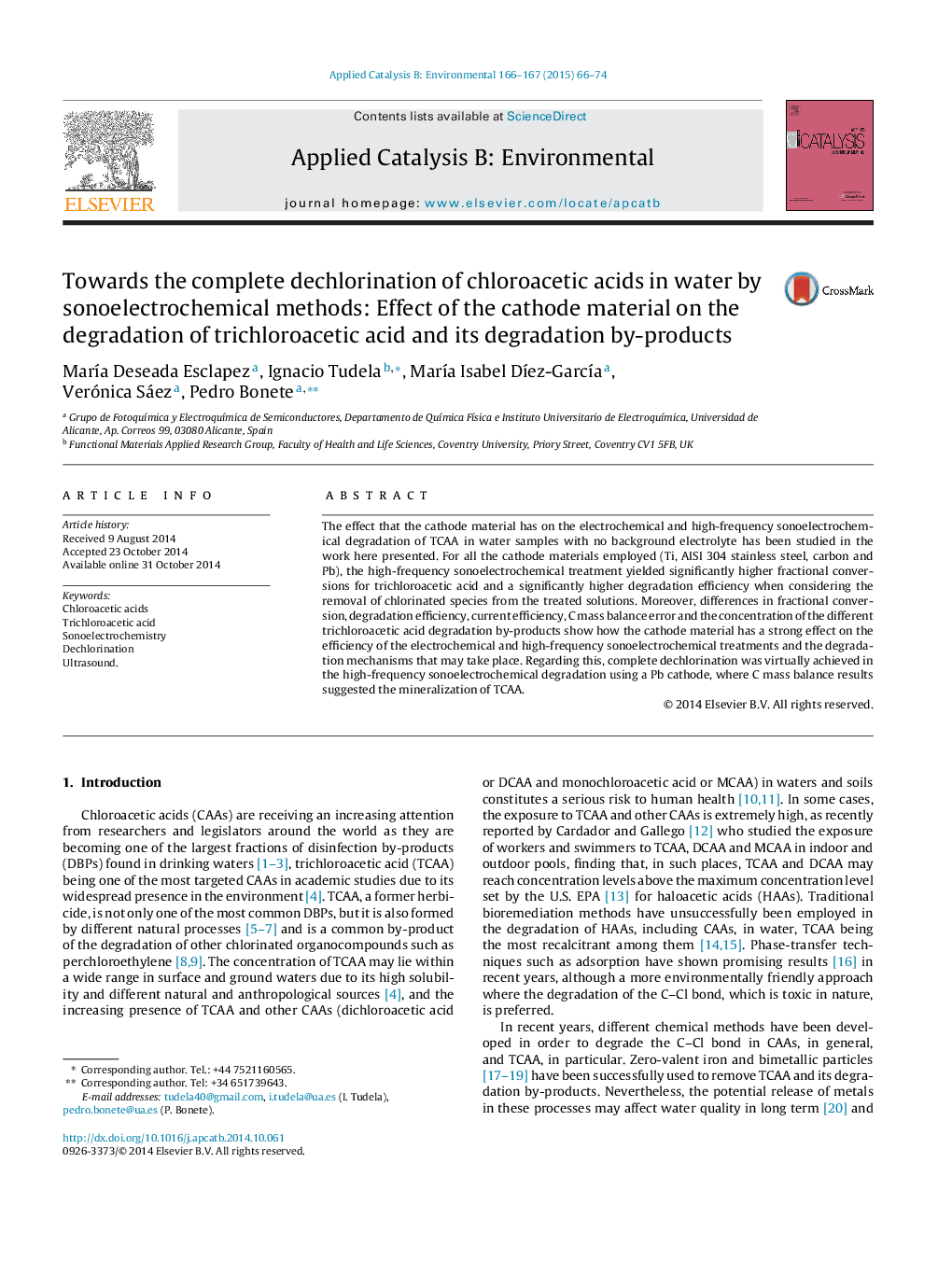| Article ID | Journal | Published Year | Pages | File Type |
|---|---|---|---|---|
| 45698 | Applied Catalysis B: Environmental | 2015 | 9 Pages |
•Degradation of TCAA by high-frequency sonoelectrochemical methods.•Cathode material has strong influence on degradation mechanism and efficiency.•Complete dechlorination achieved with Pb anode under high-frequency ultrasound.
The effect that the cathode material has on the electrochemical and high-frequency sonoelectrochemical degradation of TCAA in water samples with no background electrolyte has been studied in the work here presented. For all the cathode materials employed (Ti, AISI 304 stainless steel, carbon and Pb), the high-frequency sonoelectrochemical treatment yielded significantly higher fractional conversions for trichloroacetic acid and a significantly higher degradation efficiency when considering the removal of chlorinated species from the treated solutions. Moreover, differences in fractional conversion, degradation efficiency, current efficiency, C mass balance error and the concentration of the different trichloroacetic acid degradation by-products show how the cathode material has a strong effect on the efficiency of the electrochemical and high-frequency sonoelectrochemical treatments and the degradation mechanisms that may take place. Regarding this, complete dechlorination was virtually achieved in the high-frequency sonoelectrochemical degradation using a Pb cathode, where C mass balance results suggested the mineralization of TCAA.
Graphical abstractFigure optionsDownload full-size imageDownload as PowerPoint slide
